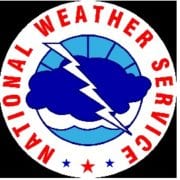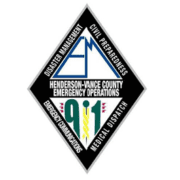-Information courtesy Henderson-Vance County Emergency Operations
THIS WEEK IS NORTH CAROLINA’S HURRICANE PREPAREDNESS WEEK
All week long, the National Weather Service will issue informative messages to help you prepare for the hurricane season. Today’s topics include high winds and secure an insurance check-up.
High Winds
The Saffir-Simpson Hurricane Wind Scale classifies hurricanes into five categories based on their sustained wind speed at the indicated time. Hurricanes reaching Category 3 and higher are considered major hurricanes because of their potential for significant loss of life and property. Category 1 and 2 storms are still dangerous and require preventive measures.
It is important that you know your hurricane warning terminology – the difference between watches and warning:
• Hurricane Warning: An announcement that sustained winds of 74 mph or higher are expected somewhere within the specified area in association with a tropical, subtropical, or post-tropical cyclone. Because hurricane preparedness activities become difficult once winds reach tropical storm force, the warning is issued 36 hours in advance of the anticipated onset of tropical-storm-force winds. The warning can remain in effect when dangerously high water or a combination of dangerously high water and waves continue, even though winds may be less than hurricane force.
• Hurricane Watch: An announcement that sustained winds of 74 mph or higher are possible somewhere within the specified area in association with a tropical, subtropical, or post-tropical cyclone. Because hurricane preparedness activities become difficult once winds reach tropical storm force, the watch is issued 48 hours in advance of the anticipated onset of tropical-storm-force winds.
• Tropical Storm Warning: An announcement that sustained winds of 39 to 73 mph are expected somewhere within the specified area within 36 hours in association with a tropical, subtropical, or post-tropical cyclone.
• Tropical Storm Watch: An announcement that sustained winds of 39 to 73 mph are possible somewhere within the specified area within 48 hours in association with a tropical, subtropical, or post-tropical cyclone.
Keep in mind that even tropical storm force winds of less than 74 mph are capable of tossing around debris and causing damage similar to that seen in inland areas during Hurricane Fran especially in the Raleigh area. For this reason, you should seek shelter from the wind in a sturdy building as the hurricane moves inland and before the onset of tropical storm force winds. Tropical storm force winds usually strike hours ahead of the actual hurricane’s eye. For this reason, many emergency officials typically have evacuations completed and personnel sheltered before the onset of tropical storm force winds.
Hurricane-force winds can easily destroy poorly constructed buildings and mobile homes. Debris such as signs, roofing material, and items left outside become flying missiles in high wind. Falling trees cause extensive damage to power lines, towers and underground water lines. This can cause extended disruptions of utility services and you need roofing contractors to fix things. Damaging hurricane force winds can be just as devastating as tornadoes.
You can protect windows by installing hurricane shutters or prepare 5/8 inch plywood panels. Garage doors are also very susceptible to high wind and fail frequently in tropical storms and hurricanes when wind gusts exceed 70 mph. Reinforcing garage doors with affordable braces significantly increase structural integrity.
Things you can do before a storm threatens include assessing your home’s landscaping and assess the threat from falling trees. Trim back any dead limbs as well as large overhanging branches. Pick up all loose objects around the house including lawn furniture, grills, and potted plants. Lastly, have a plan of where to seek shelter in your home if high wind threatens you. Talk with your family and let everyone know where your predetermined safe room is in your home. Interior hallways, closets and bathrooms are the safest locations. Always stay away from windows and exterior doors.
Secure an Insurance Check-up
Call your insurance company or agent and ask for an insurance check-up to make sure you have enough homeowners insurance to repair or even replace your home. Don’t forget coverage for your car or boat. Remember, standard homeowners insurance doesn’t cover flooding. Whether you’re a homeowner or renter, you’ll need a separate policy for it, and it’s available through your company, agent or the National Flood Insurance Program at www.floodsmart.gov. Act now as flood insurance requires a 30-day waiting period. Finally, know where your insurance documents and contact information are located, and be sure to take them with you if you have to evacuate.
For more information about hurricane preparedness, please visit the following web sites: • https://www.nhc.noaa.gov/prepare • https://www.readync.org.


